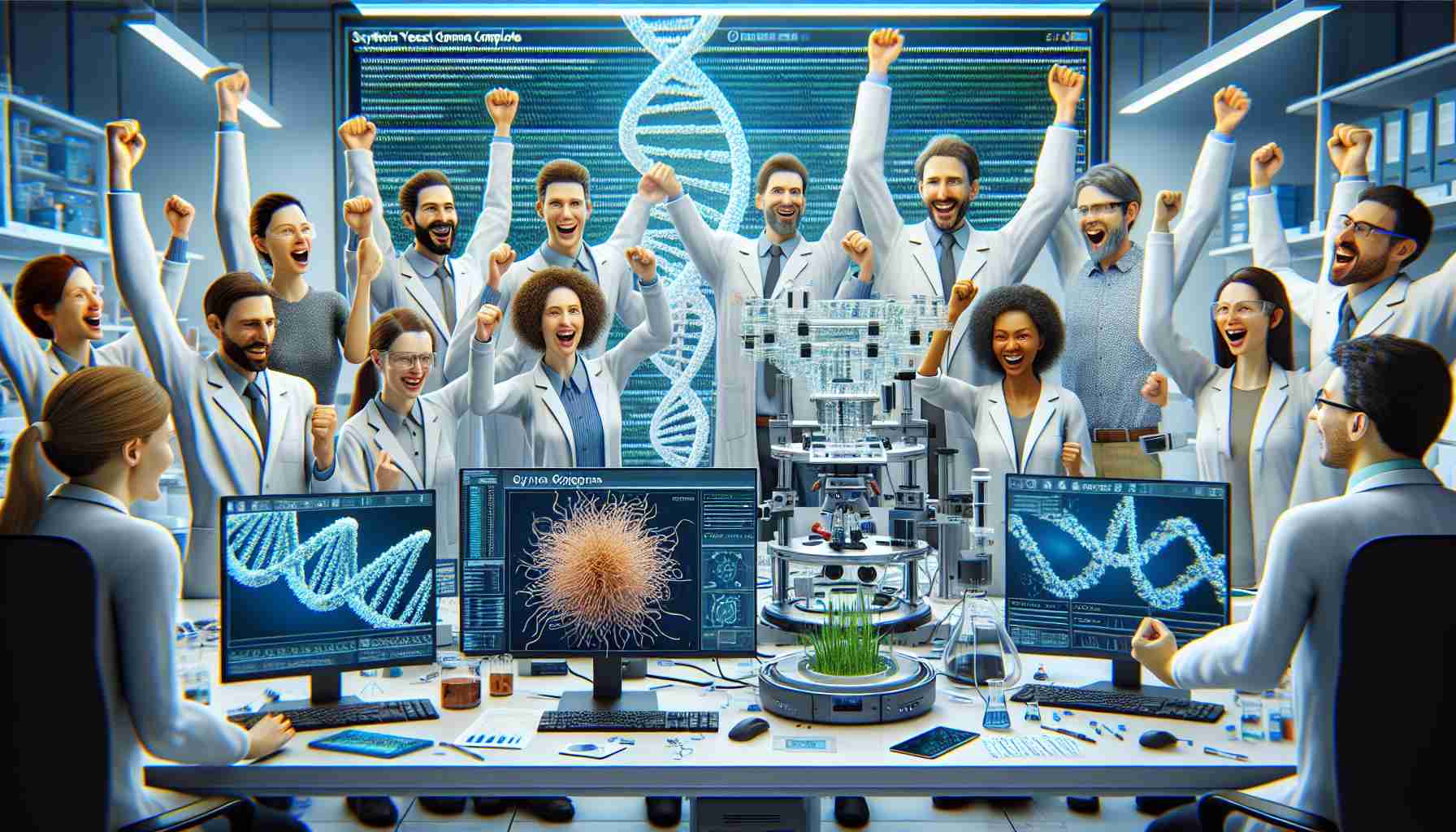- Macquarie University researchers completed the first synthetic eukaryotic genome, opening new avenues in biotechnology.
- The synthetic yeast genome, SynXVI, is expected to lead to advances in food resilience and pharmaceutical production.
- Innovative manipulation of yeast may enable crops and medicines to thrive under climate stress and utilize alternative energy sources.
- Key challenges included ensuring accurate gene expression through precise genetic marker placement.
- This achievement represents a major milestone in synthetic biology, heralding a future of improved biomanufacturing processes.
- The implications for sustainable production and innovative medical applications are significant.
In a groundbreaking achievement that could reshape our future, researchers at Macquarie University in Australia have successfully assembled the final piece of a synthetic yeast genome, known as SynXVI. After more than ten years of intensive research, this monumental step marks the first time a complete synthetic eukaryotic genome has been constructed, opening doors for innovations in food production, medicine, and sustainable materials.
Imagine a world where resilient crops and vital pharmaceuticals can be engineered in a lab to withstand climate challenges and diseases. This ambitious project illustrates just that potential. The breakthrough reveals how scientists can manipulate yeast to thrive under elevated temperatures and efficiently use alternative energy sources, such as glycerol, under these conditions.
The team meticulously debugged the genetic code, overcoming critical hurdles like the precise placement of genetic markers — essential for tracking DNA and ensuring proper gene expression. With cutting-edge gene-editing tools and advanced robotics from the Australian Genome Foundry, their efforts have culminated in a new frontier of biomanufacturing.
As synthetic biology continues to evolve, this achievement signifies a quantum leap in our ability to engineer life, promising a future filled with more efficient, sustainable production processes. While we may not be growing artificial yeast just yet, the possibilities are endless, from enhancing food crops to revolutionizing medicine. This milestone is not just a scientific triumph—it’s a beacon of hope for a resilient future.
Revolutionizing Biotechnology: The Future of Synthetic Yeast and Beyond
Introduction
In an extraordinary scientific breakthrough, researchers at Macquarie University have successfully assembled SynXVI, the first complete synthetic eukaryotic genome. This achievement heralds a new era in synthetic biology, with profound implications for various sectors, including agriculture, medicine, and biotechnology. This innovative research has far-reaching potential for creating more resilient and sustainable agriculture while altering the landscape of pharmaceuticals.
Key Innovations and Developments
1. Synthetic Yeast Applications: The construction of SynXVI presents opportunities for developing resilient crops capable of withstanding environmental stressors, ultimately contributing to global food security.
2. Pharmaceutical Development: By manipulating yeast through sophisticated genetic engineering, researchers aim to streamline drug production processes and tailor yeast to synthesize complex pharmaceuticals more efficiently.
3. Sustainable Production: The project’s emphasis on synthesizing yeast that can utilize alternative energy sources positions it as a sustainable solution to environmental challenges, promoting green biotechnology practices.
Trends and Market Insights
– Synthetic Biology Market Growth: The global synthetic biology market is expected to grow significantly, driven by advancements in genome engineering, with projections indicating a market reach of over $40 billion by 2026.
– Sustainability Imperative: As industries shift towards greener practices, solutions derived from synthetic biology, such as SynXVI, will likely gain momentum, fostering innovations in biomanufacturing and resource management.
Pros and Cons of Synthetic Yeast
Pros:
– Enhances agricultural resilience through engineered yeast.
– Reduces reliance on synthetic chemicals in pharmaceuticals.
– Offers sustainable alternatives to traditional energy resources.
Cons:
– Ethical concerns surrounding genetic modifications.
– Potential ecological impacts of introducing synthetic organisms.
– Regulatory hurdles and public acceptance challenges.
FAQs
Q1: What can synthetic yeast be used for?
A1: Synthetic yeast has the potential to be utilized in numerous applications, such as producing biofuels, creating pharmaceuticals, and enhancing food crop resilience against climate change.
Q2: How does SynXVI differ from natural yeast?
A2: SynXVI is engineered with a fully synthetic genome that can be customized to express certain traits, such as heat tolerance and efficient resource utilization, unlike natural yeast which has predefined characteristics.
Q3: What are the sustainability benefits of SynXVI?
A3: SynXVI can help minimize the carbon footprint through bio-manufacturing processes that can efficiently use renewable resources and reduce waste, contributing to a more sustainable and eco-friendly production cycle.
Conclusion
This groundbreaking achievement in synthetic biology not only paves the way for innovations across various sectors but also inspires hope for a sustainable future. By leveraging the potential of engineered organisms like SynXVI, humanity can meet future challenges in agriculture, pharmaceuticals, and environmental stewardship.
For more insights on synthetic biology and ongoing innovations, visit the main site at Macquarie University.













